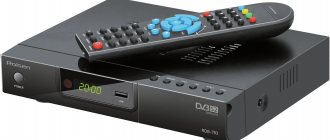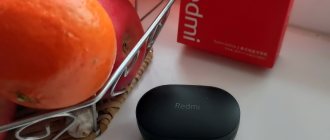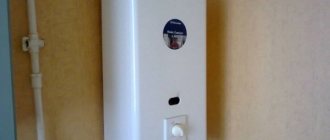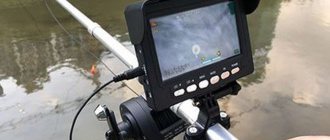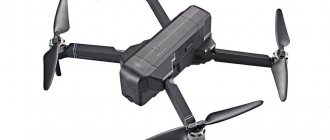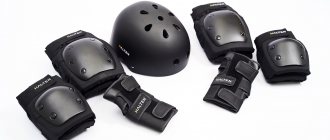Modern headphones, designed for high-quality sound reproduction, are mini-acoustic devices, the cost of which is sometimes comparable to speaker systems. Therefore, if they fail or the quality of sound reproduction changes, or the microphone fails, it is advisable to try to repair them before final disposal. You don't need to be a great expert in acoustics or electrical engineering to do this. It is enough to have experience working with a soldering iron, a multimeter and to be careful when performing precise work.
The main causes of headphone malfunction
During operation, headphones, depending on their purpose, may be subject to significant electrical, climatic and mechanical loads:
Electrical power overload
Many users, when purchasing headphones, are guided only by the manufacturer’s reputation, without considering such parameters as nominal and maximum power, and emitter resistance.
At the same time, if the output stages of the head device (mobile equipment, car radio, amplifier, etc.) are designed for a high-impedance load, and the headphones have low-impedance emitters, a significant power overload is possible.
It is usually felt as wheezing in the headphones. Such wheezing, even in a short time, can lead to burnout of the headphone voice coil or its mechanical separation from the emitter structure. This is a serious, often irreparable, malfunction.
Moisture or rainwater getting into the design of the dynamic headphone driver
Headphones used during sports training, walking or traveling are often exposed to extreme climatic conditions (sweat, rainwater, high or low temperatures).
This can cause moisture to enter the sound channels of the dynamic system, directly onto the speakers. Over time, this leads to weakening of adhesive fastenings, destruction of materials and contacts.
Some users do not comply with the requirements for storing headphones. For example, when storing headphones under the windshield of a car in the summer, they can heat up to temperatures above 100 degrees Celsius.
Mechanical loads
Most consumers have more than once thrown their headphones onto the coffee table from a height of 20-30 centimeters. In proportion to its parameters, this is similar to the situation if the speaker were dropped from a height of 2 meters. The second more dangerous mechanical factor is mechanical stress on the cord.
As a result of its stretching, fracture, or damage, thin conductors can break, disrupting the electrical connection. The most problematic areas are the connections of wires with emitters, connectors, splitter-regulators and Y-splitters.
Recommendations: How to solder a headphone plug
, How to disassemble headphones: instructions with step-by-step photos of repairing all elements of the headset
How to fix headphones yourself if one stops working
How to fix iPhone headphones, are there any differences from other devices?
The procedure for restoring headphone operation is the same for each device. The only difference may be the method of disassembling the structure and the shade of insulation of the internal conductors.
In order not to have to worry about cutting the insulation, you can singe it a little, after which it can be easily removed. Only the speakers and the housing for the audio outputs are individually made in Apple headphones. Due to disassembly, it is impossible to reassemble them again; the only way out is to fasten the plastic with Moment glue.
Main symptoms of a malfunction, identification of possible faulty elements
In order to determine the specific location of the fault, you must have experience with a multimeter. To repair headphones, a simple digital multimeter is enough.
Possible signs of malfunction:
1. There is no sound from one dynamic driver.
The first step is to ring the chain. To do this, you need to use a multimeter and a headphone circuit. Typical circuit for headphones without a microphone with a three-pin connector.
In the case of coaxial conductors, the circuit looks like:
Thus, in order to ring the left channel, you should connect the multimeter probes (in resistance measurement mode at a limit of 200 Ohms) to the outermost contacts of the connector. To control the right channel - to the first and second contacts from the connector body.
Depending on the type of dynamic emitters, the resistance can be from units to tens and hundreds of ohms. Zero resistance indicates a short circuit in the circuit, infinite resistance indicates an open circuit or a speaker malfunction. To obtain a more precise cause of the malfunction, you need to move the cord at the junction with the connector, emitters, splitter and regulator.
At the junctions of conductors to these headphone elements, conductor breakage (broken) most often occurs. If contact appears when the cord is touched, the speakers are most likely working. This way you can determine the exact location of the wiring break.
2. The emitters work, but the volume is lower and mono sound comes from the headphones.
The reason for this is a break in the common wire. In this case, the headphones will not ring in any of the options presented in Fig. 5. They will ring when the multimeter probes are connected between the outer and middle contacts of the connector.
3. Both dynamic drivers are not working.
In this case, there is usually a double fault: both emitters do not work, two conductors are broken, or a conductor plus a non-working emitter. This malfunction occurs when there is a strong mechanical impact on the headphone cord, or as a result of prolonged use with one inoperative channel.
4. Crackling sound when adjusting the volume control.
The malfunction is the result of wear on the variable resistor. It should be changed. You can remove the crackling noise for a while by rubbing the working area of the resistor with a pencil lead.
5. The microphone does not work.
The microphone is usually connected to pin 4 of the connector.
In this case, it is necessary to ring 1 and 4 (outer) contacts of the connector. If the headphones use a condenser type microphone, it may not ring. An oscilloscope is required to monitor its serviceability.
6. The sound in one of the speakers became quieter.
The sound channel of the emitter may be clogged. You can blow it out using a regular bicycle pump (in no case with your own breath).
Repairing a headphone plug with your own hands: a step-by-step guide
The plug on the headphones is a rather vulnerable element, and failure occurs on it in most cases, and in order to fix it, appropriate experience is required. The editors of Tenho.guru will tell you in detail how to fix a part without being a master, the first time.
| Illustration | Description of action |
| Having made sure that the damage to the contacts is in the audio jack 3.5, we proceed to dismantle it. To do this, cut off the plug from the main wire at a distance of 1.5-2 cm, remove the insulating layer from the wire (1.5 cm), and three contacts appear in front of you: yellow, green and red (green - left earphone, red - right, and yellow is mass). | |
| Now we narrow the contacts using rosin and a soldering iron, after which we treat the ends with tin for fastening. | |
| We cut the plug, measuring a length equal to the length of the jack itself. Then we disassemble it until the plastic appears, which separates the contacts. | |
| We determine which contacts are responsible for what: the first longest is the base (mass), the second is the right channel, the third is the left channel. Similarly, the inside of the plug is determined in a mirror order. | |
| We fix the plug in a vice and solder our headphones: to the last contact there is a green wire, to the middle one there is a red wire, and to the first (yellow) there is a yellow wire. At this stage, we check the functionality of the headphones on the phone or with a multimeter. | |
| We install heat-shrinkable tubes, first a thin one so that it covers the wires, and then a wide one, which we pull onto the plug and reduce their size using a lighter. First, we wrap the contacts with a thin nylon thread and secure them with “Moment” glue. | |
| Our headphones are ready. Try to hide all the elements carefully so that no bumps are visible through the heat-shrink tubes; this is aesthetically unattractive. |
Repair procedure
Having determined the specific location of the malfunction, you can begin repairs.
To carry out repair work you will need:
- soldering iron up to 40 Watt;
- active flux;
- low-temperature solder POS-60 or other;
- a sharp knife, maybe a stationery knife;
- insulating tape;
- heat shrinkage (cambric, the diameter of which decreases when heated);
- stranded copper wire in polyvinyl chloride (PVC) insulation with a cross-section of up to 1 sq. mm.
In the event of a break in the conductors, it is necessary to remove the PVC insulation from the areas of the suspected break using a knife. Copper conductors may have additional varnish insulation; this should also be stripped with a knife.
Similarly, strip the wire from the repair kit. Next you should tin the soldering points. This requires the use of flux and solder. If you don’t have an active flux on hand, you can use acetylsalicylic acid (aspirin), which is in any first aid kit.
The soldering process can be tricky: headphone conductors are often made of oxygen-free copper, with silk threads woven in for greater resistance to mechanical stress. Some craftsmen also use aspirin to remove varnish insulation.
Having placed the wire in varnish insulation on an aspirin tablet, touch the tinning area with a heated soldering iron. An aggressive environment removes isolation. You should not breathe these fumes: the sensation is not pleasant.
Soldering is carried out in a similar way at break points near connectors, splitters, and emitters. If the conductor breaks directly near the connector, you need to purchase a new unit. It is available for sale in any store that sells radio components.
Microphones and speakers are usually beyond repair. They can be replaced with a working one from another similar headphone. If the conductor breaks off at the junction with the speaker, you can try to disassemble the emitter housing. This can be done by using a solvent to loosen the adhesive joint.
Before soldering, place a heat-shrink cambric on one of the wires. After connection, move it to the connection site and heat it slightly using an industrial hair dryer or, in extreme cases, a lighter.
⇡#JVC HA-MR77X: while they're stretching the tires
In our review of this thunderous headphone model, we briefly mentioned that the rubber on the headband moves too easily.
Time has shown that the JVC HA-MR77X headphones contain a kind of time bomb. After ten months of daily use of the JVC HA-MR77X, we see that the protective rubber coating has worn out and began to “play” and bubble even more.
There is no doubt that sooner or later the rubber will either wear out or burst, which will be the main reason for the loss of attractiveness of the headphones. It’s hard to say when this will happen: most likely, if handled not very carefully, it will take four years.
In addition, the ear pads began to dry out surprisingly quickly. From frequent wear, the leather rings have lost their shine and become dull on the side where they touch the ears. But there are no visible cracks anywhere on a pair of ear pads. The rotating mechanism of the cups, which allows you to “throw” the speaker over your ear, has become slightly freer. In practice, it turned out that this is a very convenient thing, especially when you need to exchange a few phrases with someone, interrupting listening to music. This slight play is not a hindrance at all. Otherwise, the JVC HA-MR77X is not satisfactory.
By the way, in the winter of 2015 we saw the JVC HA-MR77X on Western sites at a big discount, for about 50-60 dollars. This is a realistic price for this model, which will be justified even if the service life of the JVC HA-MR77X is not very long.
General recommendations
- To make your headphones last longer, do not subject them to unnecessary tests.
- Before carrying out repairs, clearly determine the location of the problem.
- Carefully insulate the contacts and check with a multimeter after repair. A short circuit may cause a malfunction of a mobile or other device.
Thematic materials: Independent production of simple headphones and a headset with a microphone
, If water gets on the headphones or inside the mobile phone jack
How to charge wireless headphones
How to properly warm up your headphones and whether you need to do it
How to fold your headphones correctly so they don't get tangled
, How to make the sound in headphones louder: on a computer and phone
How to improve sound quality in headphones
, No sound in headphones
, Simple and effective ways to increase bass in headphones
The speaker on the headphones is broken, how to fix the gadget yourself
If, when trying to determine the cause of a non-working headphone, it was possible to find out that it was the speaker that was to blame, fixing it is very labor-intensive. Even in service centers they will immediately offer you a replacement for a new one. This device is quite microscopic, so soldering it is a delicate job that not every master can do, and most devices cannot be repaired.
GOOD TO KNOW!
If you are having your headphone speakers replaced at a workshop, make sure you get the exact part that matches your device model. Beware of fakes, because Chinese speakers have the worst sound quality.
If your headphones are not branded and are inexpensive, then you probably shouldn’t spend money on repairs; it’s better to buy a completely new accessory
We twist
In order to ensure maximum contact, it is better to first loosen the two wires being twisted, place one on top of the other, and then twist tightly. This option is preferable to twisting each one separately and then together.
So the wires are twisted, the headphones are singing - there’s a smile on your face).
Read also: DIY burner from a power supply
How to properly disassemble a wireless Bluetooth headset
Let's look at disassembling wireless headphones for a smartphone connected via Bluetooth using AirPods as an example.
- Remove the drivers from the box.
As with in-ear headphones, use a scalpel or utility knife blade to separate the cover from the body base. You will see the contents: board, speaker, transceiver.
In contrast, the lid is attached with latches without the use of glue or soldering.
- Using the same movement, disconnect the bottom plug used to charge the device, but not for fun - it’s easy to damage the contacts.
Then you can remove the battery by unsoldering the cables from the power contact.
Disassembly in detail - in the video.
How to disassemble a headphone case
There is nothing complicated. You will need ethyl alcohol, tweezers, and a soldering iron.
- Apply alcohol along the perimeter of the upper part of the case, where the drivers are inserted for storage and charging - it will partially corrode the glue.
Pay special attention to the sides and the center of the front where the latches are located.
- Use a spatula for disassembly or tweezers to hang the cover on the cover for removal. If you can’t do it right away, walk around the perimeter.
Disconnect the body fragments slowly; they are connected by short thin cables. As a result, remove the insert.
- Similarly, treat with alcohol and warm up the lid liner, then remove by hanging. If you don't succeed the first time, walk around the perimeter, but slowly.
- The contents of the case can be removed effortlessly if necessary.
To do this, you will have to use an auxiliary tool, for example, tweezers, after warming up the case with a hairdryer. Hang only with plastic or wooden tools. After warming up with a hairdryer, the cable is also disconnected from the battery. The rest of the filling is also removed from the case.
More details in the video.
Most common color
earth - golden (yellow)
left - blue (green)
right - red
But like any other rule, this one also has exceptions, especially when it comes to headsets. For example, it happens that the right one is green, the left one is blue, and the red one is the microphone, or there are other mixtures of colors. But GOLDEN is always EARTH. Mixtures of colors with gold, in most cases also earth.
The gold one goes to both headphones, so it is common; current flows through it from each speaker, and through it, current flows into the speakers through the other two. Well this is sooooo rude

